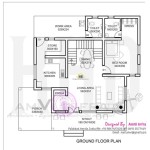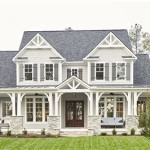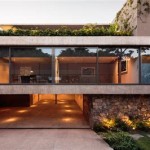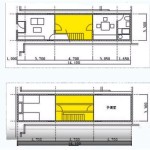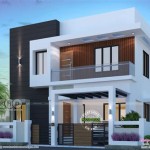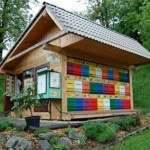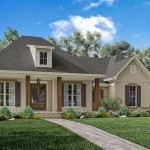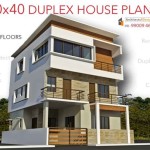Exploring the Potential of 2800 Square Foot House Plans With Basement
A 2800 square foot house plan with a basement offers a unique opportunity to create a spacious and functional living space. This size allows for ample room for a growing family, multi-generational living, or simply the desire for a home that can accommodate a variety of lifestyles. The basement further adds valuable square footage, providing flexibility for a variety of uses. This article will delve into the key considerations and advantages of designing a 2800 square foot house with a basement, exploring the possibilities for maximizing space and creating a comfortable and stylish home.
Maximizing Space and Functionality
One of the primary benefits of a 2800 square foot house plan with a basement is the ability to maximize space and optimize functionality. The inclusion of a basement provides an additional 1000-1500 square feet of usable area, depending on the design and local building codes. This extra space can be utilized for a variety of purposes, such as:
- Living Space: The basement can be transformed into a comfortable living space with a home theater, game room, or even a guest suite. This allows for a more flexible and adaptable living arrangement, accommodating guests or providing a dedicated space for hobbies and entertainment.
- Storage: Basements are ideal for storing seasonal items, tools, and other belongings that are not frequently used. This frees up space in the main living areas, creating a more organized and clutter-free home.
- Home Office: The basement can be converted into a dedicated home office, providing a quiet and private space for work or study. This is particularly beneficial for individuals who work from home or require a dedicated area for concentration.
- Workshop: For hobbyists and DIY enthusiasts, the basement can serve as a workshop, providing ample space for projects and storage of tools and materials.
By strategically planning the layout and design of the basement, homeowners can create a space that complements their lifestyle and meets their specific needs. The flexibility of a basement allows for customization, ensuring that the home adapts to the ever-changing requirements of a family.
Optimizing Natural Light and Ventilation
While basements are often associated with darkness, modern design and building techniques allow for effective natural light and ventilation. Incorporating large windows or strategically positioned skylights can bring in ample sunlight, creating a brighter and more inviting space. Proper ventilation is also essential for a comfortable and healthy environment. This can be achieved through window placement, fan systems, or even the installation of a dedicated ventilation system specifically designed for basements.
Adequate natural light and ventilation are key factors to consider when designing a basement. A well-lit and well-ventilated basement will not only enhance its functionality but also improve the overall ambiance of the home. This is particularly important if the basement is intended for a living space or home office, where natural light and air circulation contribute to a more productive and enjoyable environment.
Design Considerations for a 2800 Square Foot House with Basement
When designing a 2800 square foot house with a basement, there are several key considerations to ensure a functional, comfortable, and aesthetically pleasing home:
- Floor Plan: The layout of the home should be carefully planned to optimize space utilization. Consider the flow of traffic, the placement of key living areas, and the potential for future expansion or modification. A well-designed floor plan will ensure a seamless transition between living spaces and promote a harmonious and efficient flow.
- Basement Design: The basement design should align with the overall aesthetic of the home and cater to the specific needs of the homeowner. Consider the intended use of the basement, whether it's for living space, storage, or a combination of both. The design should incorporate features that enhance functionality, such as a separate entrance, a wet bar, or a home theater system.
- Structural Considerations: The structural integrity of the basement is paramount. Ensure that the foundation is properly designed to support the weight of the house and withstand potential seismic activity or other natural disasters. Consider the use of reinforced concrete or other durable materials to ensure long-term stability and prevent any future issues.
- Energy Efficiency: Incorporating energy-efficient design features in both the main house and the basement will contribute to a more sustainable and cost-effective home. This includes proper insulation, energy-efficient windows, and a heating and cooling system that is designed to minimize energy consumption.
- Safety Features: Consider safety features for both the main house and the basement, such as a fire escape, smoke detectors, and carbon monoxide detectors. These features provide peace of mind and ensure the safety of all occupants.
By carefully considering these design factors, homeowners can create a 2800 square foot house with a basement that is not only functional and stylish but also safe and energy-efficient.
The Benefits of a Basement
In addition to the functional advantages, a basement offers several other benefits that enhance the overall living experience:
- Increased Home Value: A well-designed and finished basement can significantly increase the value of a home. Potential buyers often appreciate the additional living space and functionality that a basement provides. This can make the house more desirable and command a higher sale price.
- Flexibility and Adaptability: Basements offer unparalleled flexibility and adaptability. They can be transformed to suit the specific needs of the homeowner at any point in time. This makes the home more versatile and capable of accommodating changing lifestyles and family dynamics.
- Protection from the Elements: Basements are generally located below ground level, offering protection from extreme weather conditions such as hurricanes, tornadoes, or heavy snowstorms. This can provide a safe and secure refuge during natural disasters.
- Lower Heating and Cooling Costs: Basements tend to be more temperature-stable than the main living areas of a house. This can result in lower heating and cooling costs, as the basement requires less energy to maintain a comfortable temperature.
The benefits of a basement extend beyond its practical uses. It can create a sense of privacy, provide a haven for relaxation, and enhance the overall enjoyment of the home. By carefully planning and designing a 2800 square foot house with a basement, homeowners can create a space that meets their needs and aspirations, offering a unique blend of functionality, style, and comfort.
Types of Basement Designs
There are several different types of basement designs to consider, each with its own set of advantages and disadvantages:
- Walkout Basement: A walkout basement has direct access to the outdoors through a set of exterior doors. This type of basement is often preferred for its natural lighting, ventilation, and easy access to the backyard or surrounding landscape. It can be ideal for creating a living space with a connection to nature or for accommodating guests who require easy access to the outdoors.
- Below-Grade Basement: A below-grade basement is entirely below ground level and does not have direct access to the outdoors. This type of basement is more common in areas with limited land space or where building codes restrict walkout basements. While it may not have natural light, it can still be functional and comfortable with proper design and ventilation.
- Finished Basement: A finished basement is an area that has been completed with flooring, walls, and ceilings, resembling the main living areas of the house. This type of basement is typically used for living space, recreation rooms, or home offices. It offers a comfortable and aesthetically pleasing environment that can be integrated into the overall design of the home.
- Unfinished Basement: An unfinished basement is a raw space that has not yet been finished with walls, flooring, or ceilings. It is often left as storage or workshop space, but it can also be finished at a later date to accommodate changing needs.
The type of basement design chosen will depend on the specific needs of the homeowner, the available land space, local building codes, and the overall design aesthetic of the house.
Conclusion
A 2800 square foot house with a basement provides a unique opportunity to create a spacious, functional, and adaptable home. By carefully considering the design considerations, maximizing space, and optimizing natural light and ventilation, homeowners can create a living space that meets their needs and enhances their quality of life.

Traditional House Plan 4 Bedrooms 3 Bath 2800 Sq Ft 38 190 Monster Plans Two Story And More

Farm House Style 2800 Richmond Plan

House Plan 59947 Craftsman Style With 2800 Sq Ft 4 Bed 3 Bath

2800 Sqft House Plans Two Story Structural Drawing Plan And Designs Books

House Plan 40311 Southern Style With 2800 Sq Ft 4 Bed 3 Bath

2800 Sqft House Plans Two Story Structural Drawing Plan And Designs Books

Modern Farmhouse Rambler House Plan Under 2800 Square Feet With Vaulted Family Room 490094nah Architectural Designs Plans

Modern Farmhouse Rambler House Plan Under 2800 Square Feet With Vaulted Family Room 490094nah Architectural Designs Plans

House Plan 65390 Craftsman Style With 2800 Sq Ft 3 Bed Bath

Country House Plan 138 1236 3 Bedrm 2800 Sq Ft Home Theplancollection Style Plans Ranch Monster

